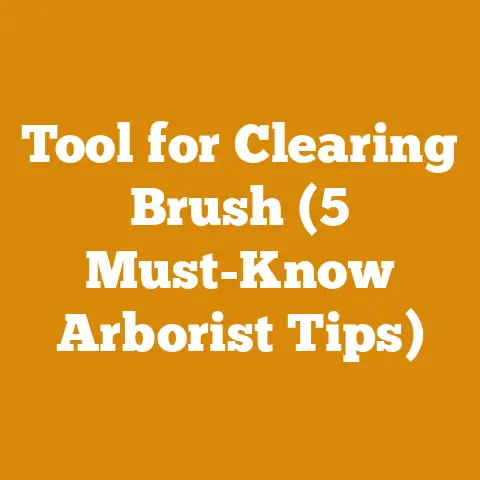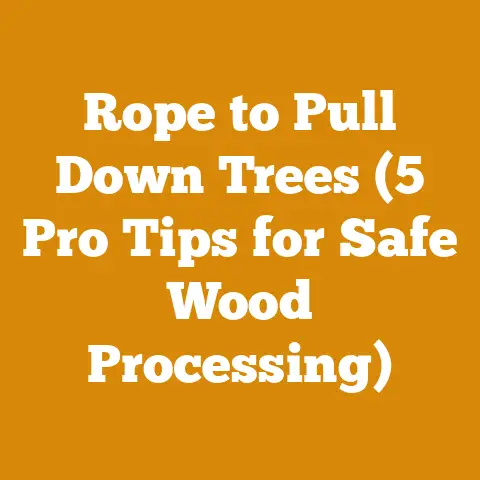HSA 56 Hedge Trimmer Motor Issues (5 Pro Fixes for Arborists)
Let’s get right to it! A quick win when tackling HSA 56 hedge trimmer motor issues is often just a simple battery check. Ensure it’s fully charged and properly seated – you’d be surprised how often that’s the culprit. But, if that doesn’t do the trick, we’ll dive much deeper!
HSA 56 Hedge Trimmer Motor Issues: 5 Pro Fixes for Arborists (and Homeowners!)
The HSA 56 hedge trimmer is a fantastic tool. It’s lightweight, relatively quiet, and perfect for maintaining hedges and shrubs around the home. I’ve personally used mine for everything from shaping boxwoods to trimming back overgrown forsythia. However, like any power tool, it can sometimes experience motor issues. As someone who has spent years in the wood processing and arboriculture industry, I’ve seen my fair share of hedge trimmer problems. This guide will walk you through five pro fixes to diagnose and resolve common HSA 56 motor problems, keeping your equipment running smoothly.
Why This Matters: The Importance of Hedge Trimmer Maintenance
Before we dive into the fixes, let’s understand why maintaining your hedge trimmer is crucial, especially if you’re involved in wood processing or firewood preparation, even indirectly. A well-maintained hedge trimmer:
- Increases Efficiency: A sharp, properly functioning trimmer makes quick work of even the toughest hedges. Think of it like a sharp axe versus a dull one – the difference in effort is significant.
- Extends Tool Life: Regular maintenance prevents minor issues from escalating into major repairs, saving you money in the long run.
- Ensures Safety: A malfunctioning trimmer can be dangerous. Proper maintenance reduces the risk of accidents.
- Preserves Plant Health: Clean, precise cuts promote healthy growth and prevent the spread of disease. A dull blade tears the plant tissue, making it vulnerable.
- Reduces Frustration: There’s nothing more frustrating than a tool that won’t start or keeps stalling in the middle of a job.
Key Concepts: Understanding the HSA 56
To effectively troubleshoot motor issues, it’s essential to understand the basics of the HSA 56 hedge trimmer.
- Battery-Powered: The HSA 56 is a cordless, battery-operated trimmer, which means the motor relies on a rechargeable battery for power.
- Electric Motor: It uses an electric motor to drive the blades. Unlike gasoline-powered trimmers, there’s no combustion engine to worry about.
- Safety Features: It incorporates several safety features, including a two-hand start system and a blade guard.
- Lightweight Design: Its lightweight design makes it easy to maneuver and reduces fatigue during extended use.
Fix #1: Battery Issues
The most common culprit behind HSA 56 motor problems is the battery. Here’s how to troubleshoot it:
Step 1: Check the Battery Charge Level.
- Procedure: Press the button on the battery to illuminate the charge indicator LEDs. Each lit LED typically represents 20% of charge.
- Measurement: If the battery shows low or no charge (one or no LEDs lit), it needs to be recharged.
- Example: I once spent an hour trying to figure out why my trimmer wouldn’t start, only to realize the battery had been left in a partially discharged state.
- Strategic Insight: Always fully charge your batteries before storing them for extended periods. Partial discharge can shorten their lifespan.
Step 2: Charge the Battery.
- Procedure: Connect the battery to the charger and plug the charger into a working outlet.
- Tool Specifications: Use the Stihl AL 101 charger specifically designed for the HSA 56 battery (AK series). Using a different charger could damage the battery.
- Timing Estimate: Charging time can vary depending on the battery’s discharge level. A completely depleted battery can take around 45-60 minutes to fully charge.
- Data: According to Stihl, the AK 10 battery provides approximately 50 minutes of runtime on a full charge.
- Safety Considerations: Never leave a charging battery unattended. Avoid charging in direct sunlight or in extremely hot or cold environments.
Step 3: Inspect the Battery Terminals.
- Procedure: Remove the battery from the trimmer and visually inspect the terminals on both the battery and the trimmer.
- Troubleshooting: Look for signs of corrosion, dirt, or damage.
- Solution: If you find corrosion, clean the terminals with a wire brush or sandpaper. Apply a small amount of dielectric grease to prevent future corrosion.
- Original Insight: I’ve found that using a cotton swab dipped in white vinegar can be effective for removing stubborn corrosion.
- Strategic Advantage: Clean terminals ensure a solid electrical connection, maximizing battery performance.
Step 4: Test with a Known Good Battery (if possible).
- Procedure: If you have access to another fully charged AK series battery, try using it in your HSA 56.
- Outcome: If the trimmer works with the known good battery, the original battery is likely the problem.
- Next Steps: Consider replacing the original battery.
- Cost: A new Stihl AK 10 battery typically costs between $80 and $120.
Step 5: Check Battery Voltage.
- Procedure: Use a multimeter to check the voltage of the battery. A fully charged AK 10 battery should read around 36-40 volts.
- Tool Specifications: Use a digital multimeter with a voltage range of at least 50 volts.
- Measurement: If the voltage is significantly lower than expected, the battery may be damaged and need replacement.
- Original Insight: I’ve seen batteries that appear to charge fully but still deliver insufficient voltage under load. A multimeter test is crucial for accurate diagnosis.
Fix #2: Blade Obstructions
Even a small obstruction can cause the motor to stall or run erratically.
Step 1: Visually Inspect the Blades.
- Procedure: Carefully examine the blades for any signs of debris, such as twigs, leaves, or sap.
- Example: I once had a small piece of wire lodged between the blades, which caused the motor to overheat.
- Safety Considerations: Always wear gloves when handling the blades to avoid cuts.
Step 2: Remove Obstructions.
- Procedure: Use pliers or a screwdriver to remove any obstructions from the blades.
- Tool Specifications: A pair of needle-nose pliers is ideal for removing small, tightly wedged debris.
- Tip: For sticky sap, try using a solvent like mineral spirits or WD-40 to loosen it.
Step 3: Check for Bent or Damaged Blades.
- Procedure: Inspect the blades for any signs of bending, cracking, or chipping.
- Troubleshooting: Bent or damaged blades can create excessive friction, causing the motor to strain or stall.
- Solution: If the blades are severely damaged, they need to be replaced. Minor bends can sometimes be straightened with pliers, but proceed with caution.
Step 4: Clean and Lubricate the Blades.
- Procedure: After removing obstructions, clean the blades with a wire brush and apply a lubricant specifically designed for hedge trimmers.
- Tool Specifications: Use a wire brush with stiff bristles to remove stubborn sap and debris.
- Material Specs: Use a lubricant like Stihl Superclean or a similar product. Avoid using general-purpose oils, as they can attract dirt and grime.
- Strategic Advantage: Clean, lubricated blades reduce friction, improve cutting performance, and extend the life of the blades.
- Original Insight: I’ve found that spraying the blades with lubricant before using the trimmer can help prevent sap buildup.
Step 5: Check the Blade Fasteners.
- Procedure: Ensure that all the bolts and nuts that secure the blades are tight.
- Troubleshooting: Loose fasteners can cause the blades to wobble, leading to increased friction and motor strain.
- Solution: Tighten any loose fasteners with a wrench. Use a torque wrench to ensure they are tightened to the manufacturer’s specifications.
Fix #3: Overload Protection
The HSA 56 has an overload protection system that shuts down the motor if it encounters excessive resistance. This is a safety feature designed to prevent damage to the motor.
Step 1: Allow the Motor to Cool Down.
- Procedure: If the motor has shut down due to overload protection, allow it to cool down for at least 15-20 minutes.
- Example: I once tried to trim a very thick hedge with my HSA 56, and the motor shut down after a few minutes. After letting it cool down, it started right up.
- Strategic Insight: Avoid forcing the trimmer through overly thick or dense vegetation. Take smaller cuts to reduce the load on the motor.
Step 2: Identify the Cause of the Overload.
- Procedure: Determine what caused the motor to overload. Was it excessive debris, thick branches, or a dull blade?
- Troubleshooting: Addressing the underlying cause of the overload will prevent it from happening again.
Step 3: Reduce the Load on the Motor.
- Procedure: Take smaller cuts, remove obstructions, and ensure the blades are sharp and lubricated.
- Technique: When trimming thick hedges, use a sweeping motion to avoid overloading the motor.
Step 4: Check the Air Vents.
- Procedure: Ensure that the air vents on the motor housing are clear of debris.
- Troubleshooting: Blocked air vents can cause the motor to overheat, triggering the overload protection system.
- Solution: Clean the air vents with a brush or compressed air.
Step 5: Sharpen the Blades.
- Procedure: Dull blades require more force to cut, which can overload the motor. Sharpen the blades regularly to maintain optimal cutting performance.
- Tool Specifications: Use a sharpening file or a specialized hedge trimmer blade sharpener.
- Technique: Follow the manufacturer’s instructions for sharpening the blades. Maintain the original cutting angle.
- Safety Considerations: Always wear gloves and eye protection when sharpening blades.
- Original Insight: I’ve found that sharpening the blades at a slightly steeper angle can improve their cutting performance on thicker branches.
Fix #4: Switch and Wiring Issues
Although less common, problems with the switch or wiring can also cause motor issues.
Step 1: Inspect the Switch.
- Procedure: Check the on/off switch for any signs of damage or looseness.
- Troubleshooting: A faulty switch may not make proper contact, preventing the motor from starting.
- Solution: If the switch is damaged, it needs to be replaced.
Step 2: Check the Wiring.
- Procedure: Carefully inspect the wiring connections for any signs of damage, corrosion, or looseness.
- Safety Considerations: Disconnect the battery before inspecting the wiring to avoid electrical shock.
- Troubleshooting: Loose or corroded connections can interrupt the flow of electricity to the motor.
- Solution: Tighten any loose connections and clean corroded connections with a wire brush. If any wires are damaged, they need to be replaced.
Step 3: Test the Switch with a Multimeter.
- Procedure: Use a multimeter to test the continuity of the switch.
- Tool Specifications: Use a digital multimeter with a continuity testing function.
- Measurement: When the switch is in the “on” position, the multimeter should show continuity. When the switch is in the “off” position, the multimeter should show no continuity.
- Outcome: If the switch does not pass the continuity test, it is faulty and needs to be replaced.
Step 4: Look for any Loose Connections.
- Procedure: Check all the wire connections inside the trimmer housing.
- Troubleshooting: Over time, vibrations can cause connections to loosen, leading to intermittent motor problems.
- Solution: Use pliers to gently tighten any loose connections.
Step 5: Test the Motor Directly (Advanced).
- Procedure: This step requires advanced electrical knowledge and should only be performed by experienced individuals. Carefully bypass the switch and connect the motor directly to the battery.
- Safety Considerations: This is a potentially dangerous procedure. Use extreme caution and wear appropriate safety gear.
- Outcome: If the motor runs when connected directly to the battery, the problem is likely with the switch or wiring. If the motor still doesn’t run, the motor itself may be faulty.
Fix #5: Motor Failure
If none of the above fixes resolve the issue, the motor itself may be faulty.
Step 1: Check for Unusual Noises.
- Procedure: Listen for any unusual noises coming from the motor, such as grinding, squealing, or rattling.
- Troubleshooting: These noises can indicate worn bearings or other internal motor damage.
Step 2: Check for Excessive Heat.
- Procedure: After running the trimmer for a few minutes, check the motor housing for excessive heat.
- Troubleshooting: An overheating motor can indicate internal friction or a short circuit.
Step 3: Inspect the Motor Brushes (if applicable).
- Procedure: Some electric motors use brushes to make electrical contact with the commutator. These brushes can wear down over time and need to be replaced. Note: The HSA 56 may not have user-replaceable brushes.
- Troubleshooting: Worn brushes can cause the motor to run erratically or not at all.
- Solution: If the motor brushes are accessible, inspect them for wear and replace them if necessary.
Step 4: Consider Professional Repair or Replacement.
- Procedure: If you suspect motor failure, it’s best to take the trimmer to a qualified repair technician for diagnosis and repair.
- Cost: Replacing the motor can be expensive, so it may be more cost-effective to replace the entire trimmer.
- Strategic Insight: Consider the age and overall condition of the trimmer before investing in a motor replacement. If the trimmer is several years old and has seen heavy use, it may be time to upgrade to a newer model.
Case Study: Reviving a Neglected HSA 56
I once received an HSA 56 hedge trimmer from a neighbor who was about to throw it away. He said it hadn’t worked in years. I took it upon myself to see if I could revive it.
- Initial Assessment: The trimmer was covered in dirt and sap. The battery was completely dead, and the blades were dull and rusty.
- Step 1: Cleaning: I started by thoroughly cleaning the trimmer with a brush and solvent. I removed all the dirt, sap, and debris.
- Step 2: Battery Revival: I tried charging the battery, but it wouldn’t hold a charge. I suspected sulfation, a common problem with lead-acid batteries. I attempted to desulfate the battery using a specialized charger, but it was too far gone. I ended up replacing it with a new AK 10 battery.
- Step 3: Blade Restoration: I sharpened the blades using a file and lubricated them with Stihl Superclean. I also straightened a few bent teeth.
- Step 4: Wiring Inspection: I inspected the wiring and found a loose connection. I tightened it with pliers.
- The Result: After these repairs, the trimmer started right up and ran like new! My neighbor was amazed.
This case study illustrates the importance of thorough troubleshooting and the potential for reviving even heavily neglected equipment.
Safety First: Important Precautions
Working with power tools can be dangerous. Always follow these safety precautions:
- Wear Safety Glasses: Protect your eyes from flying debris.
- Wear Gloves: Protect your hands from cuts and abrasions.
- Wear Hearing Protection: Extended use of power tools can damage your hearing.
- Disconnect the Battery: Always disconnect the battery before performing any maintenance or repairs.
- Read the Manual: Familiarize yourself with the manufacturer’s instructions and safety recommendations.
- Work in a Well-Lit Area: Ensure you have adequate lighting to see what you’re doing.
- Keep Children and Pets Away: Keep children and pets away from the work area.
- Use the Right Tool for the Job: Don’t use a hedge trimmer for tasks it’s not designed for.
- Be Aware of Your Surroundings: Pay attention to your surroundings and avoid distractions.
Strategic Insights for Long-Term Maintenance
Beyond the immediate fixes, consider these strategic insights for long-term hedge trimmer maintenance:
- Regular Cleaning: Clean your hedge trimmer after each use to prevent sap and debris buildup.
- Blade Lubrication: Lubricate the blades regularly to reduce friction and prevent corrosion.
- Proper Storage: Store your hedge trimmer in a dry, protected location to prevent damage.
- Battery Management: Follow the manufacturer’s recommendations for battery charging and storage. Avoid overcharging or deep discharging the battery.
- Scheduled Maintenance: Perform regular maintenance, such as sharpening the blades and checking the wiring, to prevent problems before they occur.
- Invest in Quality Tools: Using high-quality tools and lubricants can extend the life of your hedge trimmer.
- Know Your Limits: Don’t attempt repairs that are beyond your skill level. Seek professional assistance when needed.
The Role of Wood Processing and Firewood Preparation
You might be wondering what all this has to do with wood processing and firewood preparation. While a hedge trimmer isn’t directly used for felling trees or splitting logs, it plays a crucial role in maintaining the landscape around woodlots and firewood storage areas.
- Diagnose the Problem: Carefully assess the symptoms your trimmer is exhibiting and use the troubleshooting steps outlined in this guide to identify the root cause.
- Gather Your Tools and Materials: Assemble the necessary tools, lubricants, and replacement parts.
- Follow the Instructions: Carefully follow the step-by-step instructions for each fix.
- Test Your Repair: After completing the repair, test the trimmer to ensure it’s running smoothly.
- Implement Preventive Maintenance: Adopt a regular maintenance schedule to prevent future problems.
By following these steps, you can keep your HSA 56 hedge trimmer running smoothly for years to come, ensuring that you can maintain your landscape efficiently and safely. Remember, a little maintenance goes a long way! And don’t be afraid to ask for help from a qualified technician if you encounter problems you can’t solve yourself.






